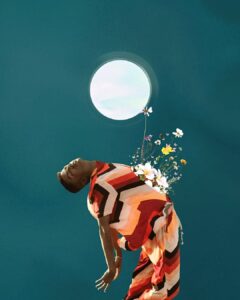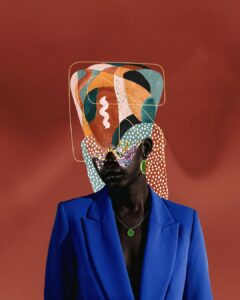The Stories We Tell Ourselves
A Strange Note in Nuwamba*
Art is such a relief to us. Jeanette Winterson remarked at the 2010 Edinburgh Book Festival. ‘Art is such a relief to us because, actually, it’s the real world — it’s the reality that we understand on a deeper level… We can go back to books or pictures or music, film, theatre, and we can find there both some release and some relief for our inner life, the place where we actually live, the place where we spend so much time.’
Stories, whether of real-life or told through a fictitious world, provide comfort for the self. We experience this comfort when we read books that are so well written and stories so well told that they burrow through the surface of our being to illuminate a truth, an emotion, once hidden in our selves. We find this comfort when we listen to songs that tell a story, songs that are made with an intention to shake and shape and transform us from within — It is what Friedrich Nietzsche likely means when he asserted that ‘God has given us music so that above all it can lead us upwards. Music unites all qualities: it can exalt us, divert us, cheer us up, or break the hardest of hearts with the softest of its melancholy tones. But its principal task is to lead our thoughts to higher things, to elevate, even to make us tremble.’ The comfort of stories is what keeps us on our seats when a remarkable film graces our screens.
Stories have the power to connect us with other human beings; to twine us with the experiences, the pain, the joys of what it means to be human: that our paths, often separated by distance, can find a common home in sameness. Stories show us how profoundly similar we are, how our lived experiences can be shared by another human being miles away from us. It is through these connections that we are able to sympathize and empathize with others, that we are comforted in the knowing that we are not alone, a revelation that wades us through storms and ignites bonds with others, bonds with which we build communities and shelter ourselves around people with whom we feel safe.
Stories have the power to kick us into action. To move us so deeply that we want to give or take or build or dismantle the pain or gladness or peace or comfort of another person or of something yet unowned by us that can quell our fears. Even brands know this truth. Marketers know this truth. This is why stories have become all too fundamental in offering the world an unending pool of products.

‘One of the functions of art,’ Ursula K. Le Guin reflected in an interview with Jonathan White, ‘is to give people the words to know their own experience.’ And it is its ability to connect us — its ability to open us up in a way that we find the dots in the stories we hear and draw patterns similar to our lives — that stories enslave us to untruths.
It is for our innate desire for comfort that we accept non-truths as truths. The truth is discomforting. Truths evict us from the lies we’ve held so dearly as truths. And, for the human self, it is a difficult thing to untell a lie, to walk away from our designed truths or truths designed by others for us. This is, perhaps, because our brain likes things that are comfortable, things that do not require much effort. (It is why habits become routines once they stick, why people make excuses like ‘this is who I am’, for a harmful behaviour that was obtained from the external world and could very well be reexamined.) Despite its ability to discharge discomfort, is not the truth more liberating than lies?
It is for our innate desire for comfort that we accept generalized truths as personal truths; that we limit our identities to the labels of self-diagnostics like horoscopes and personality tests, which bracket us in singularities; that we brand ourselves as either-or, when the self is a wiring of several charges. I find truth in Amin Maalouf’s remarks, in the book In the Name of Identity: Violence and the Need to Belong, that: ‘a person’s identity is not an assemblage of separate affiliations, nor a kind of loose patchwork; it is like a pattern drawn on a tightly stretched parchment. Touch just one part of it, just one allegiance, and the whole person will react, the whole drum will sound.’
This comes after he mentions that ‘each individual’s identity is made up of a number of elements and these are clearly not restricted to the particulars set down in official records. Of course, for the great majority, these factors include allegiance to a religious tradition; to a nationality — sometimes two; to a profession, an institution, or a particular social milieu. But the list is much longer than that; it is virtually unlimited. But it is just as necessary to emphasize that identity is also singular, something that we experience as a complete whole.’
The self is shaped by many different experiences and centred on several possibilities. It brings us to a kind of contradiction: that the self is a testament to several versions that will never be lived. Yet, it cries to exist as many selves, to tap into the what else’s of life, the possibilities. This is why specializations can often be so limiting.
But more than finding comfort in the untruths of labels and the exclusivity of being either this or that self, we also fall, with ease, into the comfort of lies told by others about ourselves.

People’s truth of us, although lies, can easily become our truth if we do not tell our truth, either because we can’t, do not want to, do not know how to, or are not given room to. Lies from others, about us, either harm our identity in their moment of spillage or live a well-nourished life in our heads as voices, voices that create stereotypes, that sap self-compassion and with which we berate ourselves when we do something wrong — I’m so stupid, how could I be so dumb?, only an idiot does this nonsense I just did. When a lie is told enough times, when it is told with enough embellished facts and stories, it becomes a truth.
‘All roles are dangerous. The world tends to trap and immobilize you in the role you play; and it is not always easy—in fact, it is always extremely hard—to maintain a kind of watchful, mocking distance between oneself as one appears to be and oneself as one actually is.’ James Baldwin asserted in his essay, The Black Boy Looks at the White Boy, collected in Nobody Knows My Name. A sentiment echoed by Amin Maalouf in the book In the Name of Identity, who observed that ‘what determines a person’s affiliation to a given group is essentially the influence of others: the influence of those about him — relatives, fellow-countrymen, co-religionists — who try to make him one of them; together with the influence of those on the other side, who do their best to exclude him.’
Both Baldwin and Maalouf go further to expose our role in wearing our truth, echoing Oliver Sacks in The Man who Mistook his Wife for a Hat, who wrote that ‘to be ourselves we must have ourselves — possess, if need be re-possess, our life-stories. We must “recollect” ourselves, recollect the inner drama, the narrative, of ourselves. A [person] needs such a narrative, a continuous inner narrative, to maintain [their] identity, [their] self.’
Maalouf pens that ‘each one of us has to make [our] way while choosing between the paths that are urged upon [us] and those that are forbidden or strewn with obstacles.’
‘You’ve got to tell the world how to treat you. If the world tells you how you are going to be treated, you are in trouble.’ Baldwin writes.
We know, through centuries of philosophy and literature and from observation, that words can make or break a person. It is words that start wars, words that create worlds, words that give us names, our earliest fabric of identity. We use words to tell stories, and it is with words that the truth can become a lie, and lies the truth.
1 Question for You
What story are you telling yourself, about yourself?
As you think through this question, here’s what you should read next: Read on becoming the last, how hardship opens us up to growth. And why we seek validation, and on why life is unavoidably uncertain.
*Nuwamba is the Hausa word for the month, November. Hausa is a West Chadic language, which is classified under the Afro-Asiatic language family. Hausa is spoken by over 30 million people in Nigeria and millions of humans across countries in West Africa, including Benin, Burkina Faso, Cameroon, Central African Republic, Chad, Congo, Eritrea, Ghana, Niger, Sudan, and Togo
 @etashelinto
@etashelinto